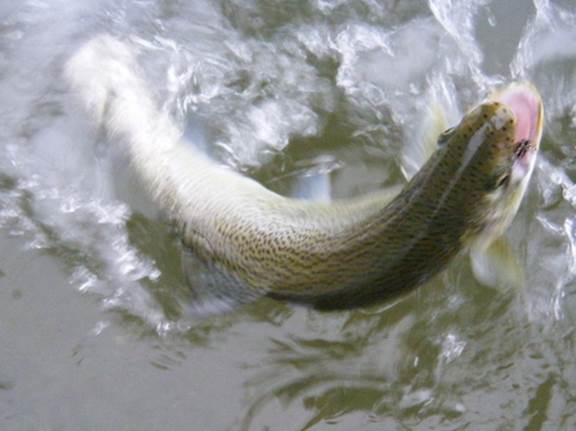THE SEA-RUN CUTTHROAT
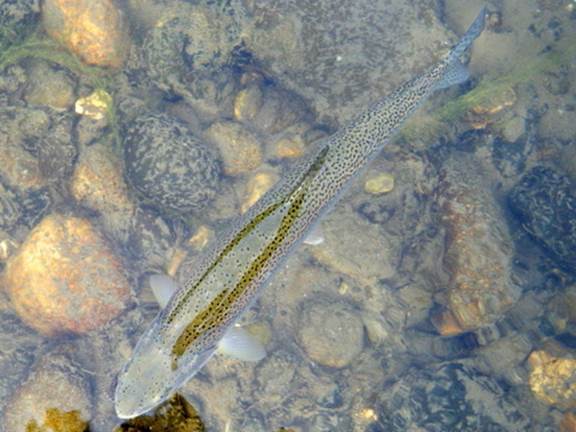
The sea-run cutthroat is the semi-anadromous form of the coastal subspecies of the cutthroat trout (Onchorhynchus clarki clarki); semi-anadromous (or, synonymously, amphidromous) in that, after entering salt water, it stays relatively close to home and will sometimes re-enter fresh water for purposes other than to spawn. Unlike the steelhead and other Pacific salmons whose epic journeys, lasting for years and covering a circuit of thousands of miles around the North Pacific basin, the sea-run cutthroat rarely travels more than thirty miles from its natal stream. Indeed, the sea-run cutthroat will sometimes spend the entire salt water phase of its life within the estuarial influence of some of the larger rivers.
The native range of the coastal cutthroat stretches along the Pacific coast from Northern California's Eel River to Alaska's Kenai Peninsula, where it inhabits the streams and rivers which drain the western slopes of the coastal mountain ranges. It is thought that the coastal cutthroat is the original cutthroat species, the other subspecies having evolved after becoming geographically isolated. Where access to salt water is readily available, many coastal cutthroats will choose to make the journey to its more abundant resources of food. Hatched in the late winter and spring from eggs deposited in small tributary creeks, the young cutthroat will rear there for an average of two years before smolting (undergoing the physiological changes which will allow them to survive the move from a fresh to a salt water environment).
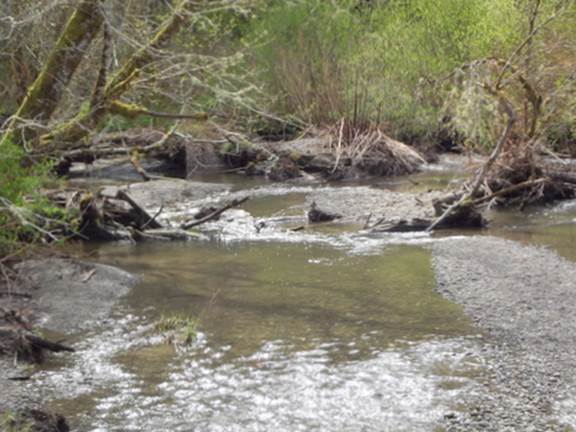
Having smolted and made their migration downstream, the cutthroat will spread out into salt water to begin taking advantage of the invertebrates and baitfish which will form the bulk of their diet. Feeding for only a few months in the salt, the urge to return to the river turns them back again toward fresh water, sometimes as early as the month of July and at a length of ten to twelve inches. Like the steelhead, the cutthroat can survive the rigors of spawning and may repeat this cycle five or more times, potentially reaching a length of twenty inches or more and a weight of up to six pounds.
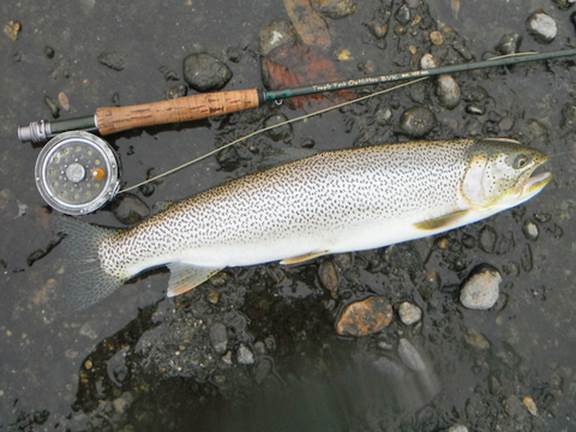
Where a river empties directly into the open ocean the cutthroat will make its way eight to ten miles offshore to avoid the inhospitable near-shore zone where big waves and limited food supplies offer little in the way of a friendly environment. But in sheltered areas, like Puget Sound, the Strait of Georgia and other saltwater bays and inlets, they will range closely along the beaches, showing little inclination to cross areas of deep water and feeding continually as they follow the tidal currents.
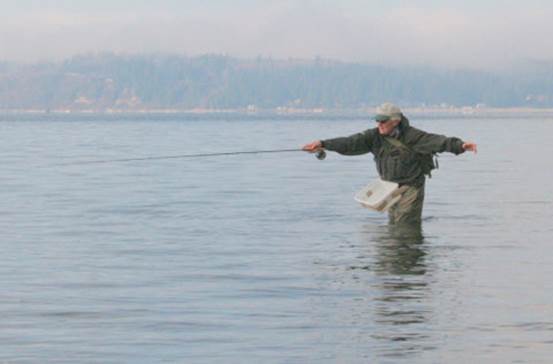
There are two distinct and differing fisheries for the sea-run cutthroat. When I was growing up, the fishery for "harvest trout" (so-named for the late summer and fall timing of their re-entry into the rivers) was a strictly a fresh water pursuit and, while there were a few dedicated saltwater cutthroat fishermen (most of them living at or near convenient beaches), it remained largely unknown and unpracticed until within the last twenty years. Northwest author Les Johnson was largely responsible for popularizing the saltwater side of the fishery and, along with the late Bruce Ferguson and other conservationist-anglers, led the fight to convince the Washington Department of Fish and Wildlife to rule all of Washington's saltwater areas catch-and-release for cutthroat in 1990. The argument for this regulation was that stocks of cutthroat form mixed schools in salt water and a consumptive fishery had the potential to decimate populations of fish originating in many of the smaller streams which, taken in the aggregate, provide a large proportion of the saltwater population but which individually might represent only a few spawning pairs. This regulation has proven successful in maintaining and, in some cases, significantly improving the numbers of wild cutthroat in both salt and fresh water (with the exception of the Cowlitz River hatchery in southwest Washington, efforts at artificial production of sea-run cutthroat have ended and all of Puget Sound's cutthroat are wild and naturally reproducing). In the last decade, the popularity of the saltwater fishery for cutthroat has grown dramatically, particularly in the Puget Sound area and fishing, especially fly fishing, both from the beaches and from boats for this unique fish, has become far more popular than the traditional fresh water fishery.
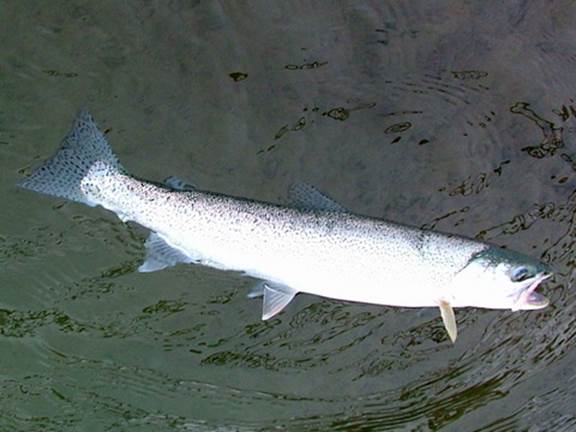
The freshwater-resident form of the coastal cutthroat exhibits a variety of life histories, from permanent residence in small tributaries, often above barriers to anadromous migration, or migration from stream to lake for a period of feeding before returning to the stream to spawn. Those cutthroats who choose to migrate to salt water also vary considerably in their habits. In larger rivers and streams many cutthroat may begin their return to the river in July and will remain in the river or its tributaries until the following late winter or spring before spawning. In small streams, particularly those emptying directly into marine waters and typical of the South Sound and Hood Canal, cutthroat may not re-enter their spawning streams until December and even later, where they will spawn quickly before returning to salt water.
FISHING FOR SEA-RUN CUTTHROAT IN SALT WATER 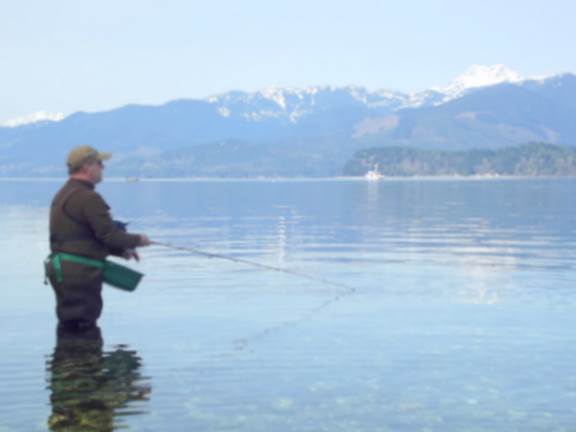
In salt water, cutthroat feed along the beaches, following baitfish and invertebrate prey, typically they remain close to the shoreline and almost never cross areas of deep water. Anglers fishing from the beach are able to cover most of these shallow-water-feeding trout with a sixty-to-seventy-foot cast. Because of this penchant for feeding right up to the water's edge many experienced saltwater cutthroat anglers fish a series of casts beginning at an angle of 45º from the shoreline and working around until the cast comes parallel to the beach, using a stripping retrieve as the fly swings in the tidal current. Boat anglers frequently find that fishing close inshore, casting toward the water's edge, sometimes right into the waves breaking on the beach, will locate many cutthroats feeding in less than a foot of water.
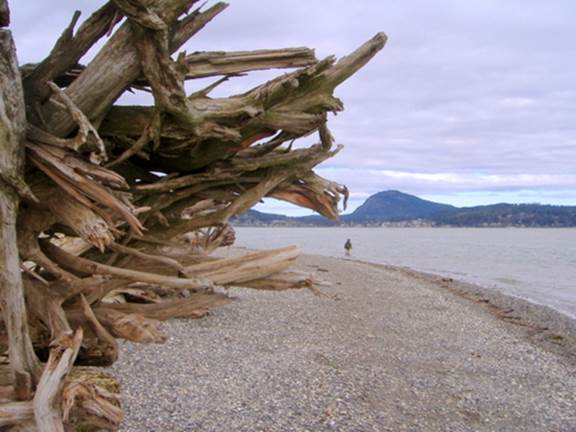
Baitfish imitations are favorites while, at certain times of the year, invertebrates such as krill (euphausiids), shrimp, amphipods, and polychaete worms (pile worms) rank high on the cutthroat's list of diet preferences. The sea-run cutthroat in salt water is highly aggressive, seemingly determined to attack and eat any live-appearing thing smaller than itself, so flies such as Mike Kinney's Reverse Spider and the Knudson Spider in a variety of colors can often prove to be highly effective. Fishing floating patterns like the Miyawaki Beach Popper and similar flies on the surface can be incredibly exciting as cutthroat (and sometimes salmon) boil and slash at them.
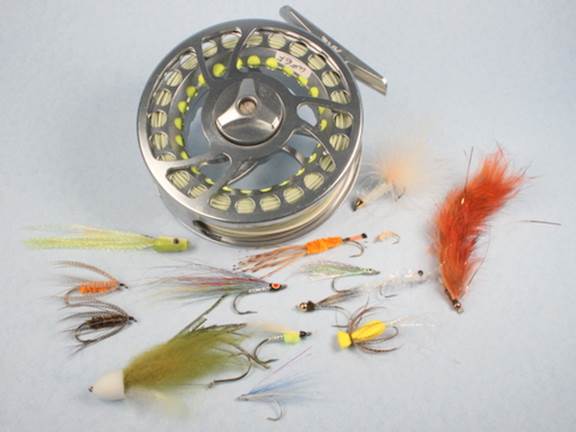
My personal preference for sea-run cutthroat tackle in salt water is a 9 to 10-foot, 6 weight, single-handed rod with a solid, saltwater-resistant reel. A 6-weight rod might seem to be a bit of overkill for a fish which will only rarely reach twenty inches in length, but wind is often a problem on the beaches and a 4- or 5-weight rod sometimes comes up short in its ability to punch casts into a headwind and, especially in the summer-to-fall time frame, there is often the potential to hook a good-sized salmon feeding along the shoreline which might even be a handful on a 6-weight. Overhand casting with two-handed rods has found favor with some anglers but, to me, don't seem to offer any significant advantages for fishing either from the beach or from a boat.
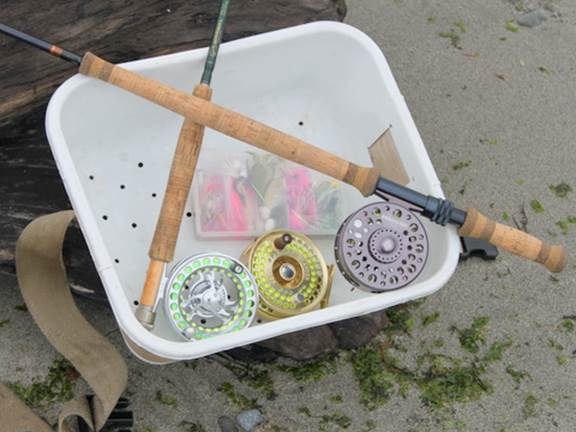
I rarely use anything except a floating or an intermediate-sink line in salt water and, since distance is important, integrated-shooting-head style lines like the Scientific Anglers Streamer Express, Rio Outbound or Airflo Forty Plus are usually favored. A stripping basket is a highly useful accessory, reducing tangles while shooting line, keeping loose line from getting twisted in the seaweed and eelgrass by the action of the waves, as well as preventing the line from getting torn up between barnacles and boot soles. Because of long retrieves, salt crystals and the abrasiveness of some textured fly lines, cut and bleeding fingers can sometimes become a problem. Taping the affected fingers is a good preventive measure and duck tape works as well as any, retaining its adhesive qualities even when wet.
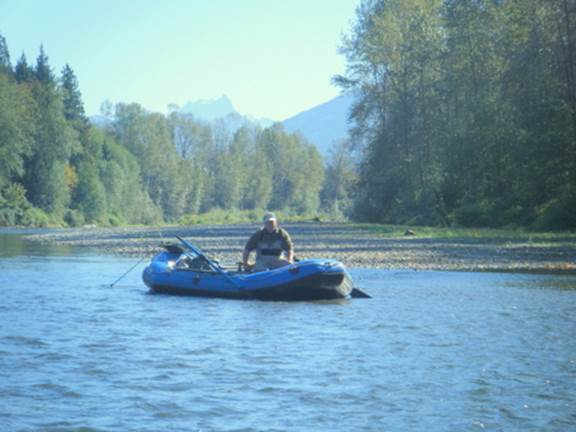
FISHING FOR SEA-RUN CUTTHROAT IN FRESH WATER
In many Northwest rivers, sea-run cutthroat may begin to return as early as mid-July. A percentage of these fish, returning for the first time at a length of ten to twelve inches, will not have matured sufficiently to be able to spawn, but they will follow their more mature companions upstream and hang around until spawning activities have taken place in the spring before returning to the richer opportunities of salt water. The midsummer to fall period in the Pacific Northwest can offer some of the best and most consistent of the region's weather and the long days and warm temperatures favor leisurely, dawn-to-dusk fishing trips.
Moving slowly upstream, sometimes stopping for a week or more at particularly favorable locations where the availability of food or other factors, like cooler, more highly- oxygenated water occur, the cutthroat will typically seek out deeper, slower-moving water where downed logs, root wads, large rocks and overhanging trees provide welcoming shelter. Sea-run cutthroat, on their upstream migrations, are gregarious, hanging out together in small schools, and where one is found, others are quite likely to be nearby.
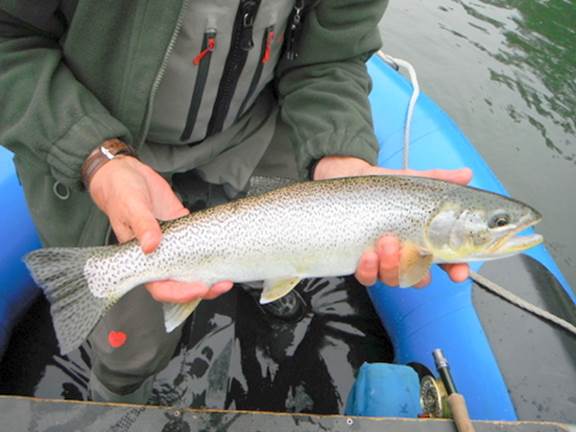
Unlike steelhead and salmon which eat little or nothing after entering fresh water, the sea-run cutthroat continues to feed actively until nearly ready to spawn so the cutthroat's enthusiastic appetite offers the fly angler a wide variety of food forms to imitate with his offerings. Mayflies in both their nymphal and adult forms, caddis (particularly the giant October Caddis), craneflies and other insects as well as baitfish; everything from small salmon fry to sculpins and young-of-the-year suckers, are eagerly sought out and consumed by hungry cutthroat. Attractor patterns, particularly in red, orange and yellow, also perform well.
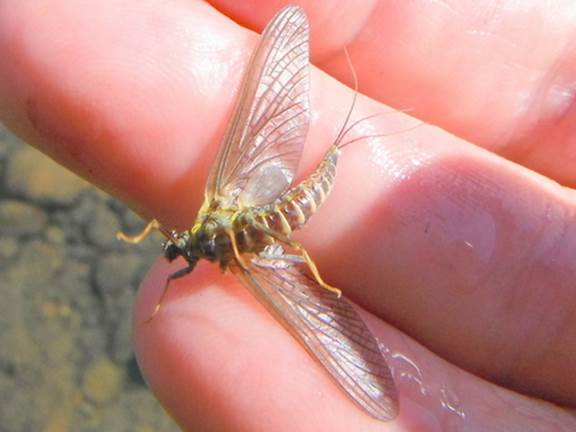
Although the tiny Blue-Winged Olive mayflies are very common in most western rivers in late summer and fall and cutthroat can at times become quite selective on them, I had become aware of a somewhat larger mayfly hatching at the same time but had never taken the trouble to determine its identity. I found one fluttering on the water as I waded along the river one day and this time I managed to get a good picture of it and was able to key it out as Drunella flavilinia, one of the Lesser Green Drakes. During the next week, I worked up a few imitations and settled on a size 14 parachute dun with an olive-dyed biot body which very closely matched the prominent yellow banding of the natural's abdomen. Using similar materials, I tied a Quigley-style floating emerger and was highly gratified when the cutthroat found them both to their liking.
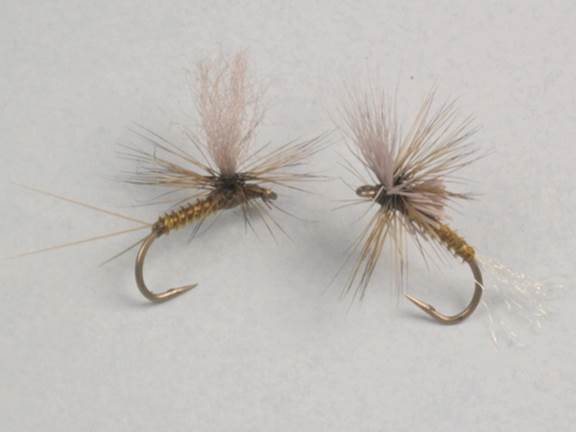
The spider-style patterns mentioned under the saltwater fishing section are equally effective in fresh water and, in fact, both the Reverse Spider and the Knudson Spider were originally developed for use in rivers. In a region where the majority of streams, are snow-and-rain-fed and relatively infertile, most salmonids have been forced to choose an anadromous lifestyle. Spawning and rearing in fresh water but attaining most of its growth in the richer waters of the ocean and saltwater inlets, the sea-run cutthroat offers the angler an unusual seasonal opportunity to experience an outstanding freshwater trout fishery.
While the dry fly remains my favorite method of fishing the sea-run cutthroat, barring a full-on hatch with fish obviously taking flies on the surface, fishing subsurface patterns will probably produce more action. Whether it is a Reverse Spider, fished only an inch or two below the surface on a floating line or a sculpin imitation fished deep on a Type II or III full-sink line, the downstream-quartering wet fly swing with a stripping retrieve allows faster and more comprehensive coverage of the water.
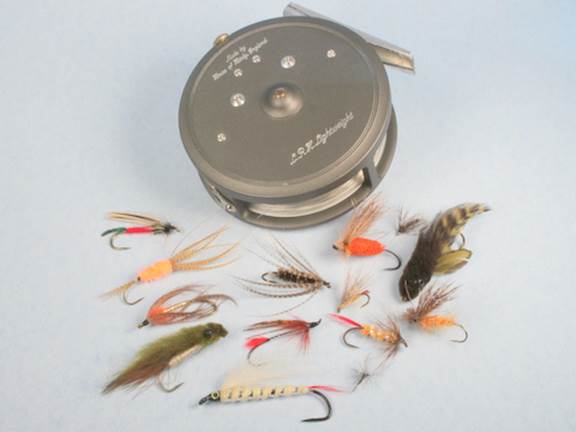
My choice of tackle for sea-run cutthroat in fresh water is somewhat lighter than what I would use along the saltwater beaches. A 9-foot, 4-weight rod fulfills my requirements and I have never felt any particular need for a disc-drag reel. A simple, lightweight, spring-and-pawl reel like the Hardy LRH Lightweight or its slightly bigger sister the Princess, has been able to handle the occasional summer-run steelhead or coho salmon sometimes encountered in the rivers at this time of the year (although such a hookup can leave the angler somewhat shaken). For many years I used only a floating line but now sometimes use a full sink line to work a bit nearer the bottom and have found it to be particularly effective in pools as deep as ten to twelve feet.
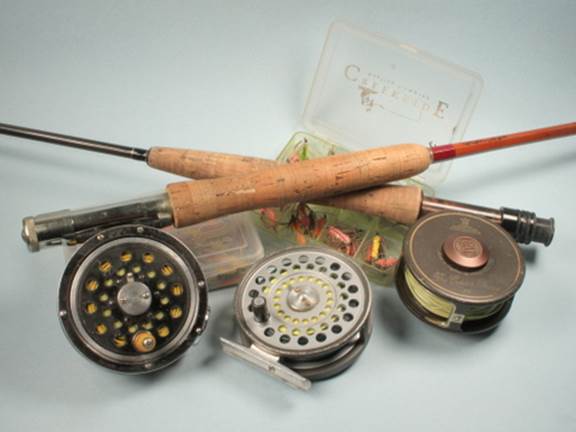
A 9-foot leader tapered to 3X will handle most wet patterns (usually tied on size 6 to 8 hooks) without spooking the fish while it may be necessary to drop down to even 5X for some of the smaller dries (particularly in the case of Blue Winged Olives which, in order to match the hatch, may require going down to size 20 or smaller imitation.
There are very few places left in the country where such a beautiful, hard-fighting, wild and native fish is available to anglers in such good numbers and in both salt and fresh water. Overshadowed, for most anglers, by the greater size and cachet of salmon and steelhead, the sea-run cutthroat has remained under-appreciated on its own turf and it is time that its strength, fighting ability and game qualities were recognized. After all, as the old-timers said, "If they grew to the size of steelhead, no one would ever land one."
